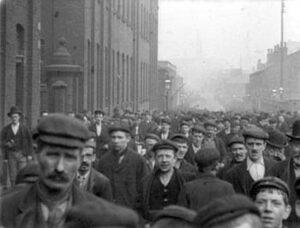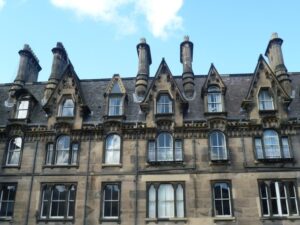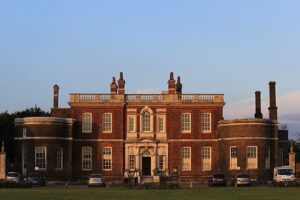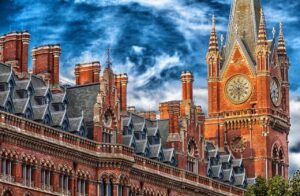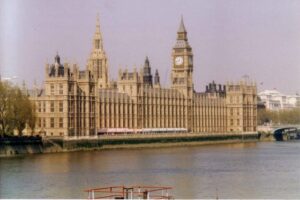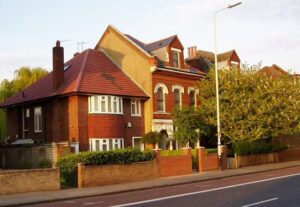A Brief Guide to Victorian London Architecture
Date post added: 27th May 2025
One of the most enthralling things about London is its diversity – and that spans endless aspects. As you walk around the city, its architectural diversity is apparent. It’s a heady mix of history, innovation, and culture. Within a relatively short walk you might see medieval churches, Tudor beams, Victorian terraces, brutalist concrete blocks, and gleaming glass skyscrapers. That’s London architecture in a nutshell.
It was in the 19th Century, Victorian era (1837–1901), that the architectural profession came into its own. During the reign of Queen Victoria, British architects found a freedom to experiment with a range of styles. Add to that the Industrial Revolution, new technology and major societal shifts, and it was a dynamic time for architecture in Britain.
But what are the key features of Victorian architecture? And which iconic London landmarks are actually Victorian buildings? Our guide will show you what to look out for as you walk around London’s streets.
From the Georgian to Victorian period
Britain felt a pretty seismic shift from the Georgian era to the Victorian period. Think of the Georgian-Victorian transition as going from a refined, elegant Jane Austen ballroom to the ambitious, eclectic world of Charles Dickens. One era doesn’t immediately stop when the other begins. There’s a blending, a tug-of-war between restraint and expression; classical order and industrial innovation.
The Victorian period saw a major population surge, as well as huge advances in transport (making it easier to source new building materials), new technology and craftsmanship. Why? A transformative thing – the Industrial Revolution – redefined British society at that time.
More people were forced to move from agricultural communities to towns and cites for work. This rapid migration to the city, and the hideously poor conditions they found there, created the famous slums of Dickensian London. Shocked by the impact of industrialisation, architects turned to history for inspiration – the Middle Ages no less. But the Victorian style was all about being bigger and better than before.
What are the key features of Victorian architecture?
With better transport links and new technology, Victorian era architects had access to new building materials. This allowed them to be more inventive and try out complicated ideas. A Gothic revival aesthetic became commonplace for public buildings in particular. Architects took inspiration from grand Medieval cathedrals and distilled it for use on town halls, churches, and more.
But Gothic architecture wasn’t the only design style. In contrast to the elegant symmetry of the Georgian era (more of which below), Victorian style was more eclectic. It combined Gothic Revival, Italianate, Queen Anne, and others. Warm red brick and terracotta were used commonly. Decorative elements like bay windows, elaborate entrance porches, tiled floors and fireplaces, and patterned brickwork were typical Victorian features.
How to tell London’s architecture eras: Georgian or Victorian?
You can still see both Georgian and Victorian architectural styles in London. 10 Downing Street is a prime example of the elegant Georgian architecture style, whilst the more ornate Natural History Museum showcases Victorian style.
Georgian architecture (1714–1830):
Named after the reigns of the four monarchs, King George I, II, III, IV, Georgian architecture’s rooted in classical styles. It’s all about being elegant, orderly and refined with ideals of symmetry and proportion. It’s seen as the British interpretation of 18th-century neoclassical architecture, influenced largely by Palladian style.
In the late Georgian era, the Regency style grew in popularity. Visit Bath and you’ll be surrounded by this architectural style. Watch Bridgerton and you’ll see magnificent Georgian properties. Ranger’s House in Greenwich is a beautiful Georgian villa which was used as the Bridgerton family home.
Key features:
- Elegant symmetry: facades are typically flat and balanced, often with five windows across.
- Sash windows: multiple small panes of glass were used.
- Palladian and neoclassical influences: think columns, pediments and grand proportions.
- Plain brickwork: no fancy patterns, just minimal decoration.
- White stucco trims: Italianate style edging around doors and windows.
- Panelled doors: often with semi-circular fanlight windows above the panels.
- Basements and mews: separate spaces for servants and stables in wealthier homes.
Victorian architecture:
More romantic and expressive flourishes emerged, in contract to the simple, refined Georgian style (and the less ornate Edwardian style that followed). With access to new materials – like terracotta and rolled plate glass – Georgian architects had different options available to them. Larger homes with bay windows, porches, and complex features were a stark contrast to the compact homes of the Georgian era.
Key features:
- Ornate detailing: design features like decorative trim, patterned brickwork, terracotta panels, and stained glass.
- Bay windows: often large and protruding, especially in terraced houses.
- Patterned brickwork: contrasting coloured, large bricks were used for decoration and depth.
- Tall roofs: steeply pitched roofs and gables are typical of this time. Welsh slate tiles were often used.
- Cast iron railings: often with intricate designs.
- Asymmetrical facades: eclectic styling was typical of this period and bucked the trend of Georgian symmetry.
- Sash windows: larger panes were used as rolled plate glass became available. Often a single bar was used on the vertically sliding windows.
What are some examples of Victorian architecture in London?
You can find many examples of Victorian architecture around London – from grand palaces to family housing. That said, many buildings were destroyed during the 20th century especially during World War II.
Let’s start with the iconic, impressive buildings. The Houses of Parliament (aka the Palace of Westminster) is one such Victorian building. Designed by Sir Charles Barry and Augustus Pugin, the Palace of Westminster is of Gothic-revival style and was completed in 1870. The world-famous building is considered a masterpiece and was designated a UNESCO World Heritage Site in 1987.
Very different in style, Joseph Paxton’s Crystal Palace was created for The Great Exhibition. When it opened in 1851, the vast exhibition hall was considered an innovative marvel. The light and airy cast iron and plate glass structure originally stood in Hyde Park before moving to being transferred to South London.
Another Victorian building created with this cast iron framework was St Pancras Railway Station. Next time you’re there, look up and take in the ornate metalwork and its extremely high ceilings. The station’s adjoining hotel, The Midland Grand Hotel, is considered one of London’s finest Gothic-Revival buildings and dates back to 1868.
Over in South Kensington, the Natural History Museum is a fine example of Romanesque Revival in London and dates back to 1880. Stop to take in the striking exterior of the building. You’ll note the elaborately moulded terracotta tiles, typical of Victorian Gothic architecture.
South Kensington is rife with impressive Victorian buildings. The Victoria and Albert Museum, the Royal Colleges of Art and Music, Imperial College, and the Royal Albert Hall were all built in this era. Hence the names dedicated to the royal couple.
New Victorian homes for a growing population
Victorian architecture isn’t restricted to majestic public buildings. You can find great examples in residential streets. Victorian terraced houses with pitched roofs, tiled hallways, ornate fireplaces and sash windows abound and remain incredibly popular.
Rows of terraced houses were built to accommodate the increased demand for homes in London during this period. This was a time when the middle class was on the rise. They benefitted from fancy new technologies like gas lighting, or being able to take a bath or use the toilet indoors.
But by the late Victorian period, terraced houses were mostly lower-middle class homes. Upper-middle classes tended to prefer detached houses or villas. In general, more spacious homes became typical for all tiers of the middle class during the Victorian era.
Explore the beauty of Victorian London architecture with us
Join us to see, and understand, Victorian London. Our knowledgeable guides will point out features that you may have walked past umpteen times before.
Discover dark Victorian London on a tour that highlights forgotten corners of the city. If you’re fascinated by CharlesDickens’ life and writing, follow in his footsteps on our Dickensian London tour
For something more refined, join our Chelsea art and architecture and Kensington Royal Village tours.

